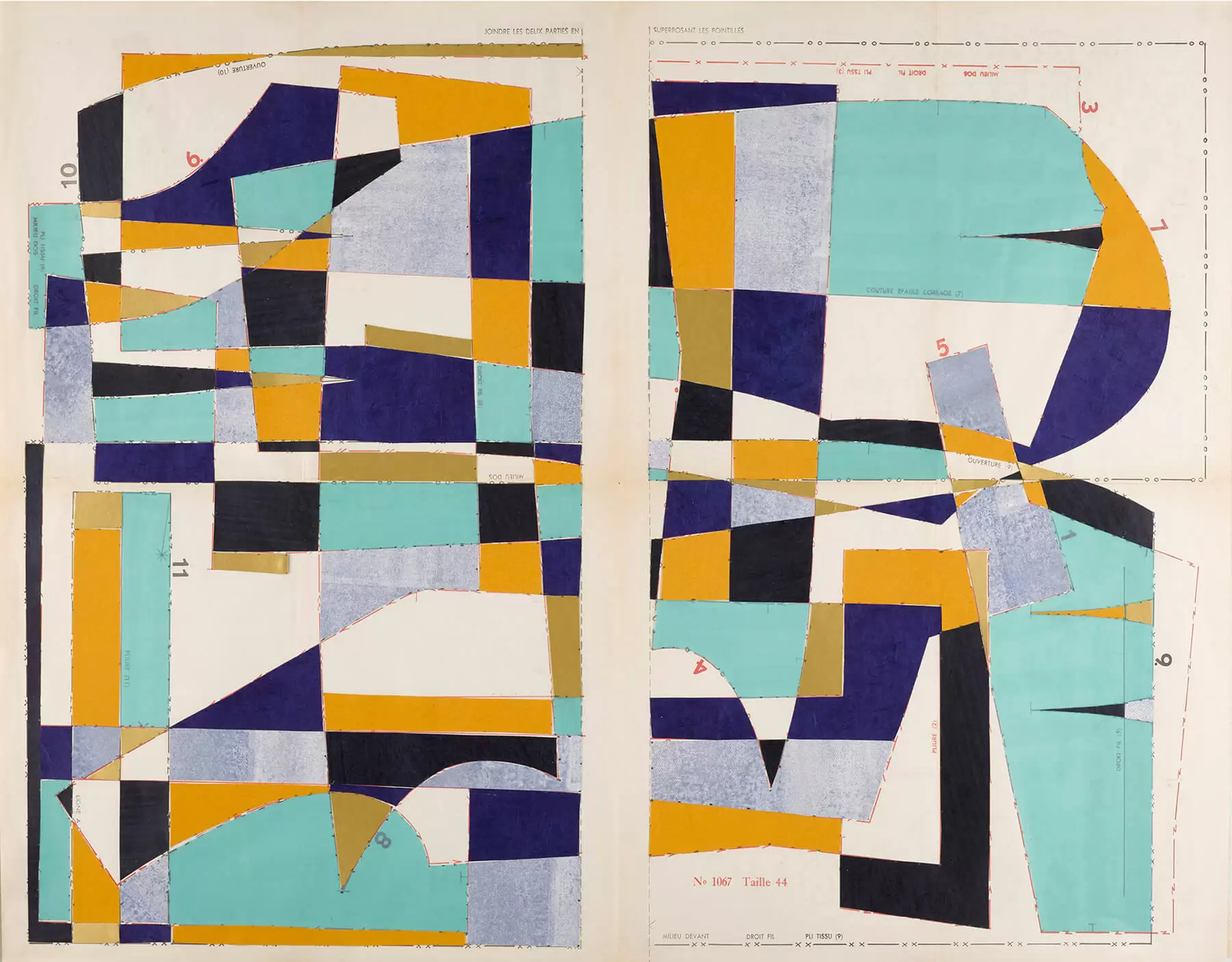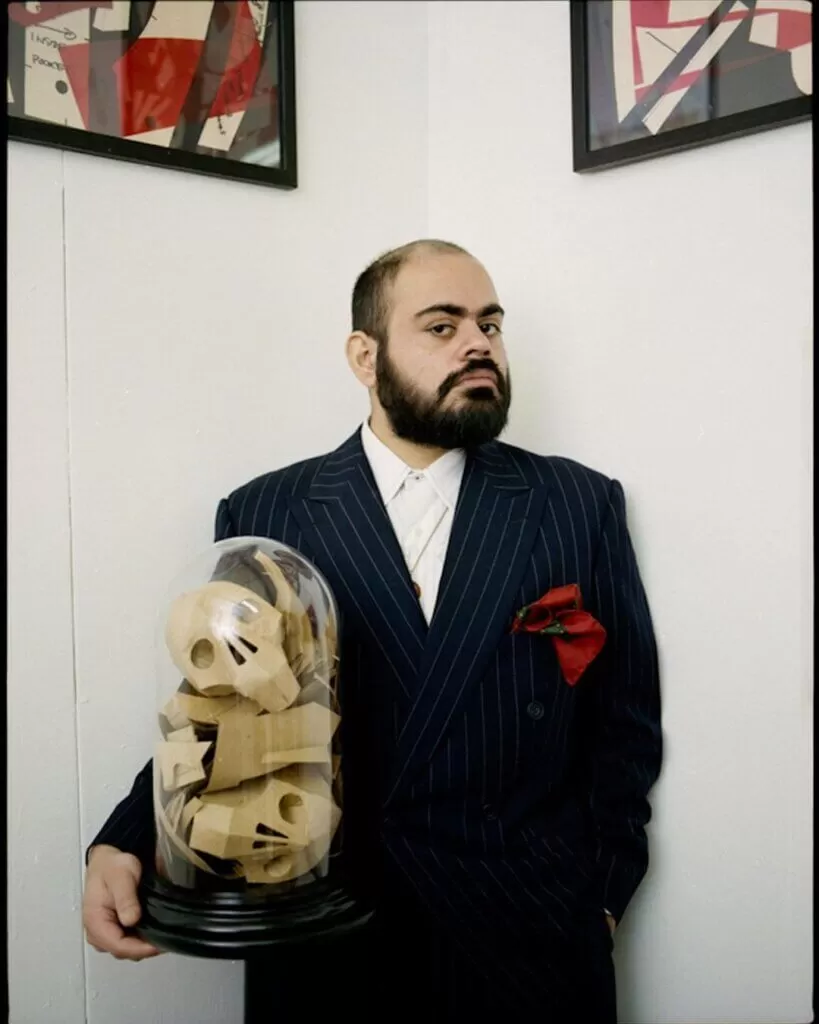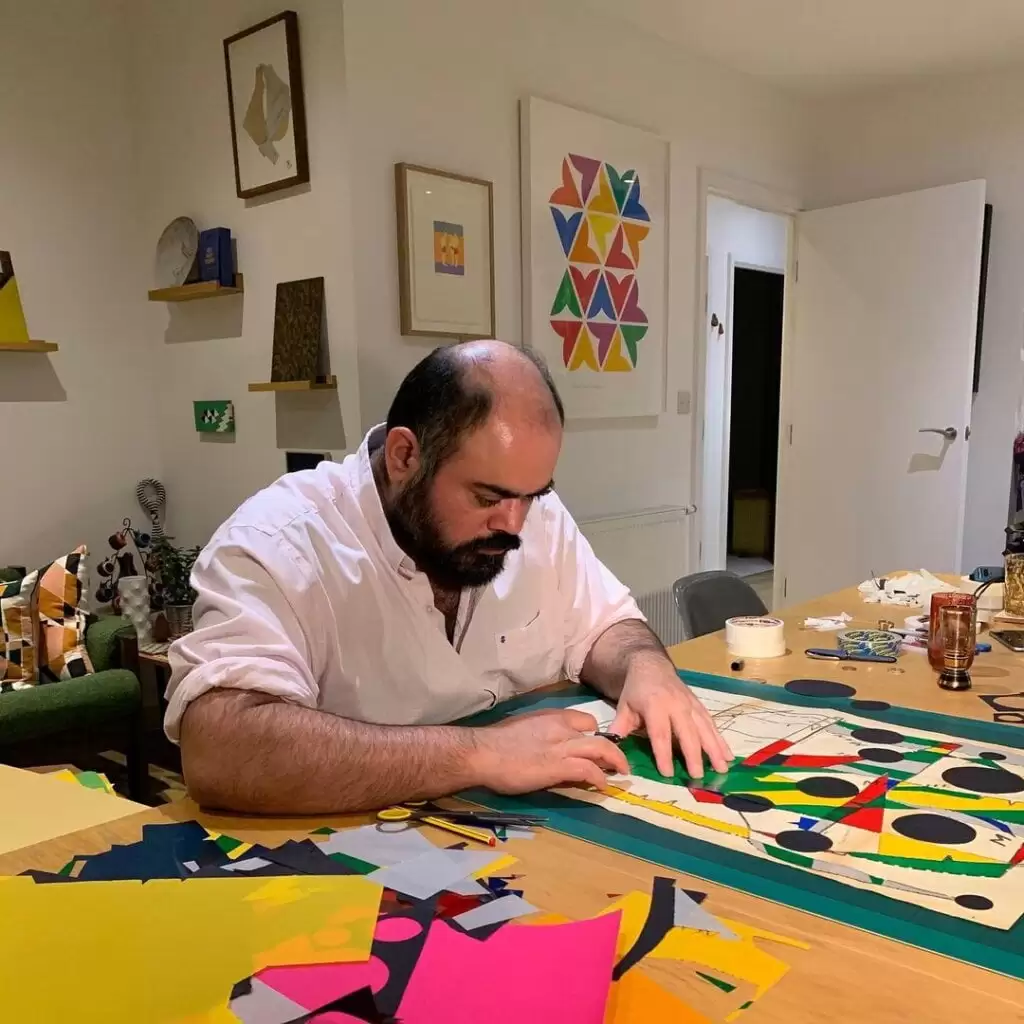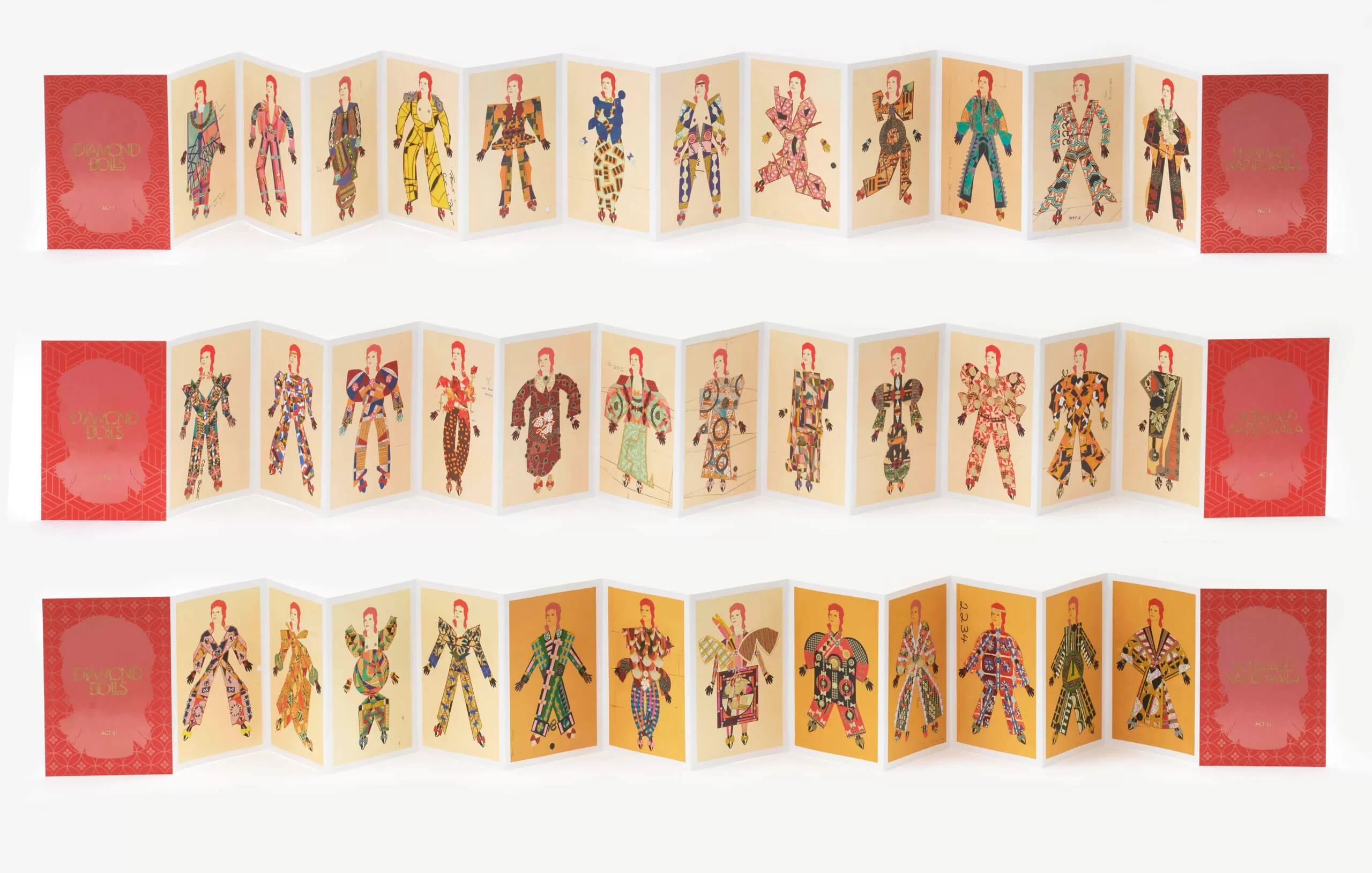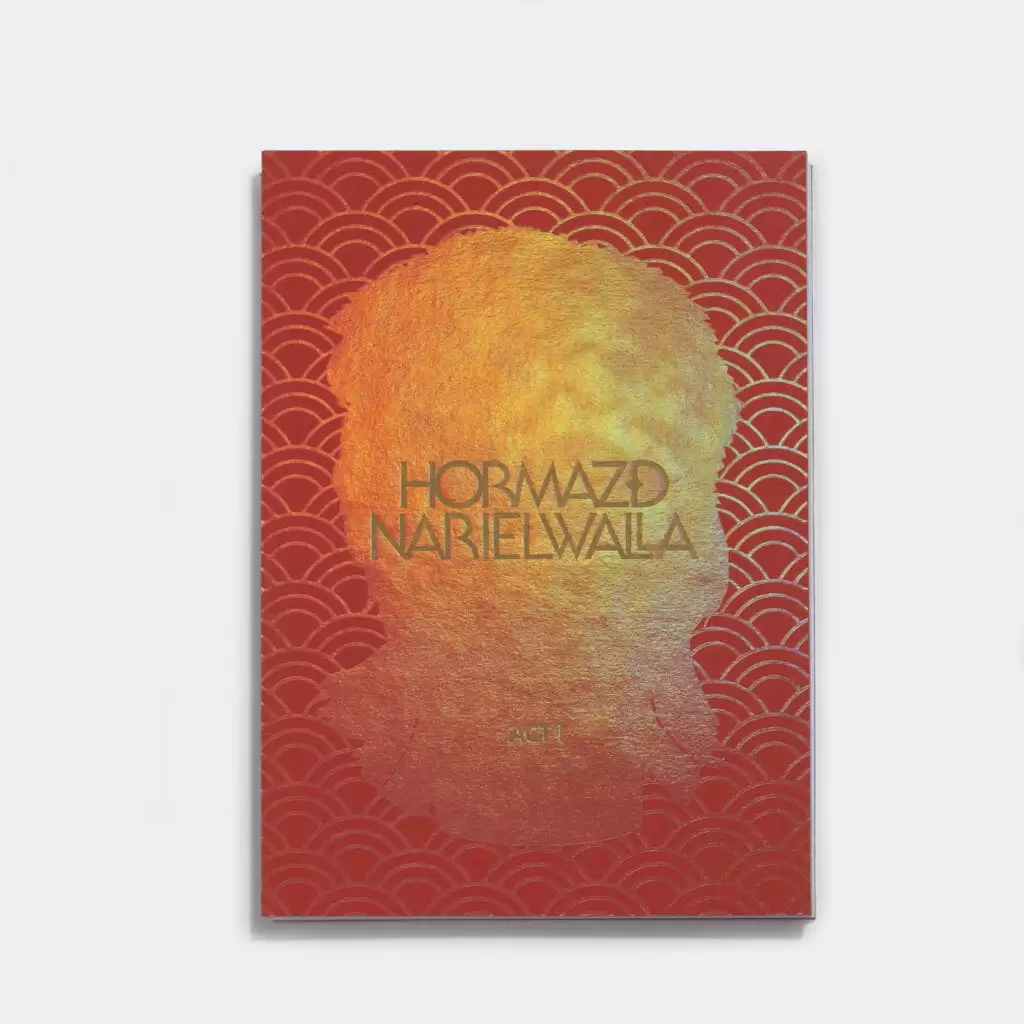Collage artist Hormazd Narielwalla works across several artistic disciplines, including printmaking, sculpture, and books. He is distinctly known for his pioneering paper collages constructed from abandoned patterns of tailors deceased clients.
I think about ideas all the time. How can I use my patterns to tell stories? I begin with an idea and then allow my thoughts and hands to start composing in paper
Hormazd Narielwalla
We managed to catch up with the collage artist shortly after releasing his new book celebrating the iconic David Bowie. Diamond Dolls centres on Narielwalla’s signature collages exploring adornment, identity, and transformation themes. This is the artist’s ninth book in a series of award-winning publications and pushes the limits of lithographic printing into the territory of an art medium. In this interview, we learn more about Narielwalla’s inspiration, creative process and more.
You can purchase a copy of Narielwalla’s latest publication Diamond Dolls at Concentric Editions
Q: For those of you who don’t know you, please can you introduce yourself?
Hormazd Narielwalla: I’m a visual artist who works across several artistic disciplines, including printmaking, sculpture and artist’s books. Still, I am best known for my intricate paper collages and assemblages, which are originated on the surfaces of antique, vintage and bespoke tailoring patterns.
My work shifts between abstract compositions to iconic figures. Born in India and moved to the UK in 2003 initially to study as a fashion designer, my practice is influenced by cross-cultural perceptions that I explore in several different ways. I live and work in London.
Q: What is your inspiration, and why do you do what you do?
Hormazd Narielwalla: I have always been attracted to diagrams and line drawings. When I was training to be a fashion designer, I loved working with patterns. I have to admit, I was not very good at pattern cutting and sewing, but I pushed myself into it.
It was only when I had a conversation with a tailor on Savile Row, and he told me he would shed patterns of deceased customers, that I realised I could free them from the cutting board and start viewing them as “beautiful abstractions of the human body”. The patterns carry not only an outline of a garment but also a representation of the individual who wore it.
They became anthological objects, and I reinterpreted them overlaying their delicate geometries with my forms to express ideas about identity, memory, migration, and diaspora. I am fascinated by the transformative power of clothes as a means which to project notions of character and identity. The idea of bodily adornment and costuming is a recurrent motif. Who are we? Where do we come from? Who might we become? are themes that reverberate throughout my work.
Q: Can you tell us about your creative process?
Hormazd Narielwalla: I think about ideas all the time. How can I use my patterns to tell stories? I begin with an idea and then allow my thoughts and hands to start composing in paper. I never sketch ideas out. I always say go in and start making. Sometimes it is incredibly successful, and others I have to abandon. I like surrounding myself with different papers and patterns that give me ideas on where to go next.
Q: Your work has a running theme featuring abstract body forms and abstract designs. Can you tell us the reason behind this?
Hormazd Narielwalla: In my images, I incorporate references to aesthetics and cultures from throughout the world. Following the original pattern’s instructive points and lines, the blocked planes of cut papers are selected for their associative and decorative qualities.
From modest material starting points, the work articulates an eloquent range of subject matter. Dead Man’s Pattern (2008) – an artist’s book inspired by the bespoke suit patterns of a deceased client of a Savile Row tailor – offers an elegiac reflection on mortality; while a commission for the Crafts Council (2013) used military uniform patterns from 1850-1947, in a sculptural installation that examined colonial narratives of the British Raj.
Lost Gardens – an ongoing series of collages that resemble delicate cartographic remnants embellished by passages of vivid colour – is inspired by the memory of a vanished rose garden from my childhood.
Rock, Paper, Scissors (2020) – a sequence of 100 small-scale works made on the pages of a 1906 sewing manual – responds to the sculpture of Barbara Hepworth, referencing her signature pierced forms with apertures cut into the layers of applied paper.
Q: You have launched a new book titled Diamond Dolls celebrating David Bowie. Can you tell us more about this and why Bowie is the focal point of the book? Do you consider Diamond Dolls to be your lockdown project?
Hormazd Narielwalla: During the beginning of lockdown, I made a series titled Rock, Paper, Scissors inspired by a trip I made to St. Ives before the start of the Pandemic. I loved Barbara Hepworth’s garden and went every single day to seek solitude.
The series took shape in the form of miniature collages made of pages of a tailoring book produced in Spain in the early 1900s. The idea is that the pattern drafts are 2-dimensional drawings intended to turn into clothing once sewn. As an artist, I’m, suggesting that these drafts can be used to create compositions that allude to sculptural forms.
The series also turned into an artists book published by EMH Arts at the Eagle Gallery and was shortlisted for the Trinity Buoy Wharf Drawing Prize.
In the second lockdown, I thought a lot about legacy and the things we leave behind, and it took me back to growing up in India. As a young gay man growing up in India, western culture hardly permeated. It would seem in very gently, drop by drop. Then in the 1990s, MTV started broadcasting music videos from the west, and my first glimpse of David Bowie was from the 1970s, with his bright red hair and glass-like eyes.
His beauty captured my imagination immediately. He showed me a different kind of masculinity in the character of Ziggy Stardust – the hair, the makeup, the costumes, in addition to his music and stagecraft.
The 36 collages were made with the intention that I was capturing his essence and his spirit. They are not meant to be literal illustrations of things that he wore. Andrew Renton, in his response, rightly points out – “fantastically, intricately patterned collaged costumes, rifling off those early Kanasi Yamamoto outfits, but like nothing, you have seen before. They feel familiar because they feel completely true to spirit”.
The series has also transported itself into an artist’s book co-published by Concentric Editions and EMH Arts London. It is an edition of 300 and it beautifully hand made in London, in the form of 3 Acts. They open into a concertina from and can be placed on top of each other on a book stand, referencing the muse as a performer. In that context the book also had a performative nature in the way it comes together.
Q: How was lockdown for you?
Hormazd Narielwalla: I missed seeing my collectors and friends and hosting dinner parties. I tried to surround myself with art and work, so I didn’t have to be confronted by the hardships of the lockdown. It gave me opportunity to build on my archive and work on different series.
Q: There’s a reference to the Japanese traditions of Kabuki in the book, what was it about these traditions that you found so inspiring? What was the link between Kabuki/ Onnagata and David Bowie?
Hormazd Narielwalla: Bowie was very much inspired by Japanese theatre, where he momentarily became someone else with the illusion created through costume and make-up. I, too have craved to be other people, and this manifested itself in a series and books called Paper Dolls where I dressed myself as a Geisha and walked through the Gardens of Eden, performing to myself and creating an illusion where I could escape into.
Q: Diamond Dolls has a performative quality to it, do your publications always have this?
Hormazd Narielwalla: Most of the time, they are hidden secrets in the Artist’s books I produce. For Diamond Dolls, we wanted the book to erupt and start to perform because the subject matter is about performance and entertainment. The 36 Bowie figures look straight at the viewer as if they are giving a performance stage.
I have previously made a book called in a Sky in Box, which erupts into a large map like a composition of hand pained sky papers cut meticulously onto tailoring patterns – the idea traces our fascination with the sky and the desire to touch and experience it up close. I have also made a book which suggests without the spirit we are just slabs of meat.
A cabinet, when opened, reveals flesh prints on patterns that hang from tailoring hooks like a butchers shop, the same way patterns hang in a tailoring workshop. The Artist’s book was shortlisted for the Trinity Buoy Wharf Drawing Prize was part of my series Rock, Paper, Scissors inspired by the sculpture garden of Barbara Hepworth.
The original collages were made on pages of a sewing book from the 1900s. I wanted the Artist’s book to see the entirety of the series in one view and decided that the book will be made in the form of two large sheets with the artworks printed as a set, and cleverly folded to be reduced to the size of the original book. I like the idea that on first glance the book looks recognisable in its shape, but when handled, it becomes something else.
https://www.narielwalla.com/books
Q: What next for you as an artist?
Hormazd Narielwalla: I’m working on a series of collages made from lingerie patterns inspired by the poem Birds of Passage by Henry Wadsworth. Birds have often been depicted in my practice. I work with lingerie patterns a lot, and the euphemism men call women chicks. The lingerie patterns are interesting objects as they are much smaller and often made on colourful card taking the practice into new territory. I have also made a series of 24 works inspired by a story in colour linking them to extracts of Virginia Woolf.
Q: Last, what does are mean to you?
Hormazd Narielwalla: It’s the way I choose to communicate with the world and a form that allows me to express my thoughts, and my identity.
concentriceditions.com
emmahilleagle.com
©2021 Hormazd Narielwalla


